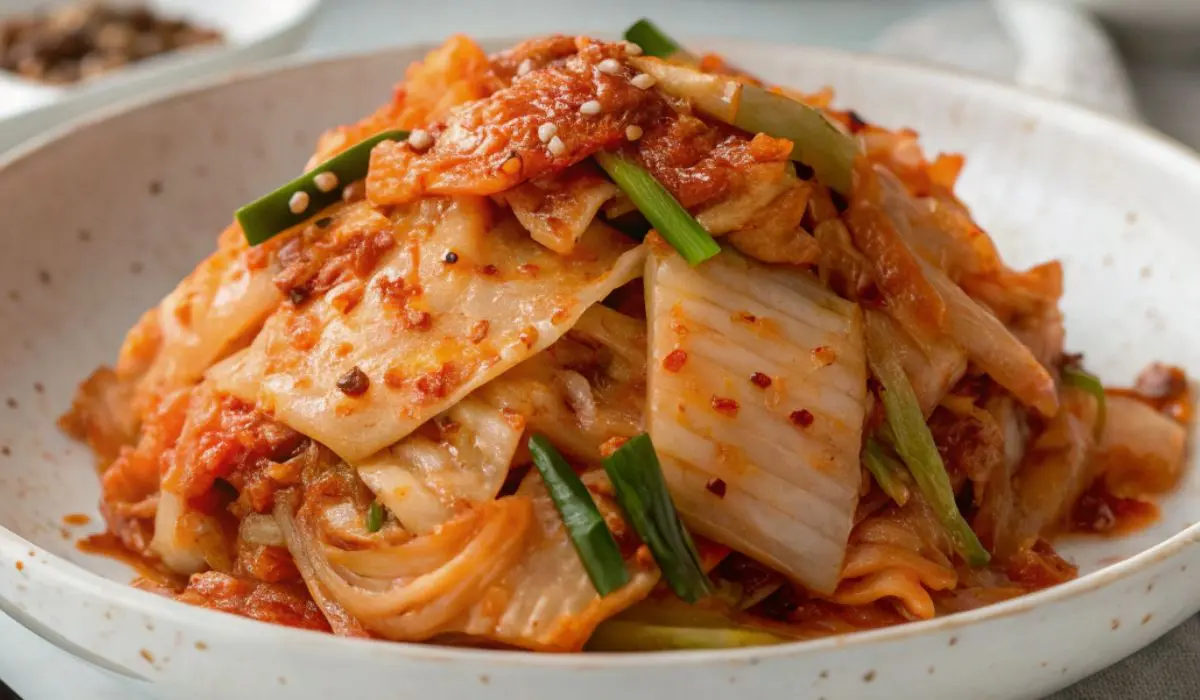Ingredients
Equipment
Method
- Cut napa cabbage into quarters lengthwise. Keep the stem intact so leaves stay together. Rinse thoroughly under running water.
- Dissolve coarse salt in 16 cups of water in a large bowl. Dip each cabbage quarter in this saltwater.
- Sprinkle additional cooking salt on the thick white parts of each leaf. This draws out moisture and seasons the cabbage.
- Place salted cabbage in a large food-grade plastic bag. Pour in the reserved saltwater. Seal the bag tightly.
- Let cabbage pickle for exactly 6 hours. Turn it upside down every 2 hours. This timing is crucial for perfect texture.
- While cabbage pickles, mix glutinous rice flour with 1.5 cups water in a saucepan. Boil over medium heat for 5-8 minutes until thick. Let cool completely.
- Add Korean chili flakes to the cooled rice paste. Mix well. This creates the signature red color.
- In a large bowl, combine radish with fine sea salt, fish sauce, and fermented shrimp. Let sit for 10 minutes.
- Add chives, carrots, garlic, ginger, sugar, onion, and the chili paste mixture to the vegetable mix. Mix thoroughly.
- After 6 hours, rinse pickled cabbage thoroughly. Drain in a colander for 1 hour to remove excess salt.
- Place one cabbage quarter on a tray. Spread kimchi paste between each leaf. Use 1-2 small handfuls per quarter.
- Season remaining cabbage quarters. Keep leaves attached to the stem for better structure.
- Transfer kimchi to airtight containers. Leave at room temperature for 24 hours, then refrigerate.
- Kimchi is ready to eat when chilled. For deeper flavor, wait 3-4 more days before serving.
Notes
Storage Tips: Store kimchi in the refrigerator at 3-5°C. Use stainless steel or BPA-free plastic containers. Fill containers only 70-80% full to prevent overflow.
Substitutions: Korean ingredients are essential for authentic flavor. Gochugaru and Korean fish sauce cannot be easily substituted without changing the taste.
Timing: The 6-hour brining time is crucial. Shorter brining leads to bland kimchi, while longer brining makes it too salty.
Shelf Life: Properly stored kimchi lasts several months in the refrigerator. Some batches stay fresh for up to a year with ideal storage conditions.
